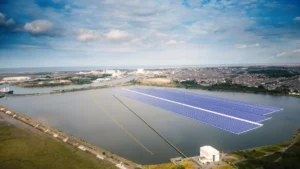While the world needs more energy, it simply can’t sustain more emissions of carbon dioxide (CO2), nitrogen oxides (NOx) and particulate matter (PM), writes Certas Energy.
Government, industry and the wider supply chain remain resolute in the quest to make a positive impact on the ongoing air quality problem. But while technologies do exist to make an immediate difference to emissions, it must be acknowledged that low levels of uptake are first and foremost a commercial (not necessarily a technical) challenge.
Without an incentive to switch, and while the tax rebate on red diesel remains so attractive, the business case for investing in the majority of alternative fuels is a difficult one to build – especially where existing infrastructure is lacking. Here liquid fuels – whether oil for domestic/commercial heating or fuel for on/off-road applications – must play a part in kick-starting public and commercial sectors on the path towards a zero-emission end-point.
So why should liquid fuels be part of the transition to cleaner air? What does the current liquid fuel mix look like? And how can they support commercial and public sectors in the journey to a zero-emission future?
Making the case for liquid fuels
Current legislation leans heavily towards electrification as the most viable and ‘proven’ energy solution for reducing emissions in smaller vehicles, but in the interests of being technologically neutral and ‘open to all alternatives’, sets out no clear directive. Particularly for those industries remaining most reliant on heavy-duty diesel engines – where e-mobility isn’t set-up to meet commercial energy demands.
While electrification reduces emissions and is an integral part of the UK’s commitment to sustainability, it’s still a long way from providing the required infrastructure for a viable solution.
Rather than solely advocating the solutions of tomorrow, the focus should also be on the ‘fuels for now’ that will forge the way for ‘fuels of the future’. This opens up a clear opportunity for proven alternatives that offer a technically and commercially-sound stop-gap on the journey to cleaner air.
It’s here that liquid fuels come into play. With so much investment having already gone their development, liquid fuels are best placed to not only form part of the future energy mix but to lead the transition to cleaner air.
The infrastructure for liquid fuels is well established; its supply chain can be commoditised and developed (with the potential to be low-cost); and, as such, this category presents the most robust and reliable transformation path – for now.
What’s currently in ‘the mix’?
Advances in research and development have harnessed a new generation of liquid fuels that can redress the balance between technical and environmental requirements. Alternative liquid fuels have been created to deliver a wide range of environmental benefits, and characteristics may include biodegradability, lower NOx and PM emissions, reduced carbon footprint and renewability.
When looking for liquid fuels that facilitate a smooth, cost-effective transition to cleaner air, the growing portfolio of paraffinic fuels is particularly interesting as the energy market moves forward.
There are many technologies within this category that are already being tested and trialled. Compositions include hydrotreated vegetable oil (HVO), power to liquid, biomass to liquid, hydrothermal liquefaction, hydrotreated biofuel products and gas-to-liquid (GTL) – which offers compelling evidence of reducing emissions from HDD engines across Europe.
The New Energy Reality
The truth is that there has to be a short to medium-term energy stop-gap that satisfies security of supply and sustainability concerns – all while driving towards Government emissions strategies and policy initiatives. And the really uncomfortable truth? There is no utopian solution that completely satisfies all of the criteria. This is the new energy reality.
A broad mix of energy sources will enable the most cost-effective and robust transformation path. No one can forecast the future as technologies develop and evolve. But from a commercial perspective, the fact that the infrastructure and supply chain is strongly in place for liquid fuels is a key consideration.
Ultimately, the world will need liquid fuels for longer than it currently envisages. The zero-emission end goal is where we all want to be, but without embracing evolving enhancements in fuel technologies, it will take us much longer to get there.
Developed by Certas Energy, the Energy Reality Series aims to support the UK’s commercial sectors in taking stock of today’s new and evolving energy mix.
The first report in the series, titled ‘The Future of Liquid Fuels’, focuses on the immediately available short-term wins in the form of liquid fuels. It is available for free download from https://www.certasenergy.co.uk/my-business/future-of-liquid-fuels
















